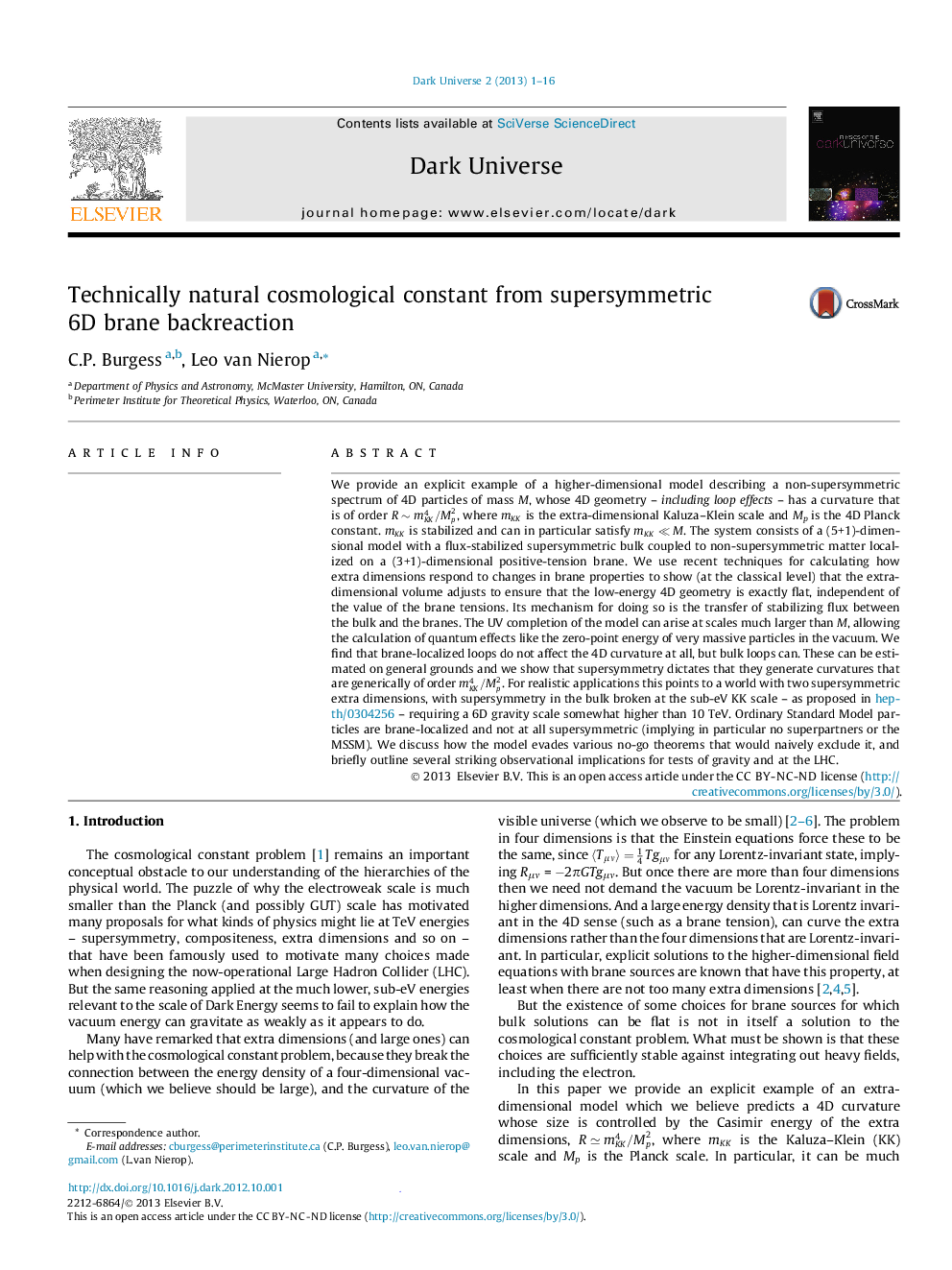| Article ID | Journal | Published Year | Pages | File Type |
|---|---|---|---|---|
| 1780807 | Physics of the Dark Universe | 2013 | 16 Pages |
We provide an explicit example of a higher-dimensional model describing a non-supersymmetric spectrum of 4D particles of mass M, whose 4D geometry – including loop effects – has a curvature that is of order R∼mKK4/Mp2, where mKK is the extra-dimensional Kaluza–Klein scale and Mp is the 4D Planck constant. mKK is stabilized and can in particular satisfy mKK≪M. The system consists of a (5+1)-dimensional model with a flux-stabilized supersymmetric bulk coupled to non-supersymmetric matter localized on a (3+1)-dimensional positive-tension brane. We use recent techniques for calculating how extra dimensions respond to changes in brane properties to show (at the classical level) that the extra-dimensional volume adjusts to ensure that the low-energy 4D geometry is exactly flat, independent of the value of the brane tensions. Its mechanism for doing so is the transfer of stabilizing flux between the bulk and the branes. The UV completion of the model can arise at scales much larger than M , allowing the calculation of quantum effects like the zero-point energy of very massive particles in the vacuum. We find that brane-localized loops do not affect the 4D curvature at all, but bulk loops can. These can be estimated on general grounds and we show that supersymmetry dictates that they generate curvatures that are generically of order mKK4/Mp2. For realistic applications this points to a world with two supersymmetric extra dimensions, with supersymmetry in the bulk broken at the sub-eV KK scale – as proposed in hep-th/0304256 – requiring a 6D gravity scale somewhat higher than 10 TeV. Ordinary Standard Model particles are brane-localized and not at all supersymmetric (implying in particular no superpartners or the MSSM). We discuss how the model evades various no-go theorems that would naively exclude it, and briefly outline several striking observational implications for tests of gravity and at the LHC.
